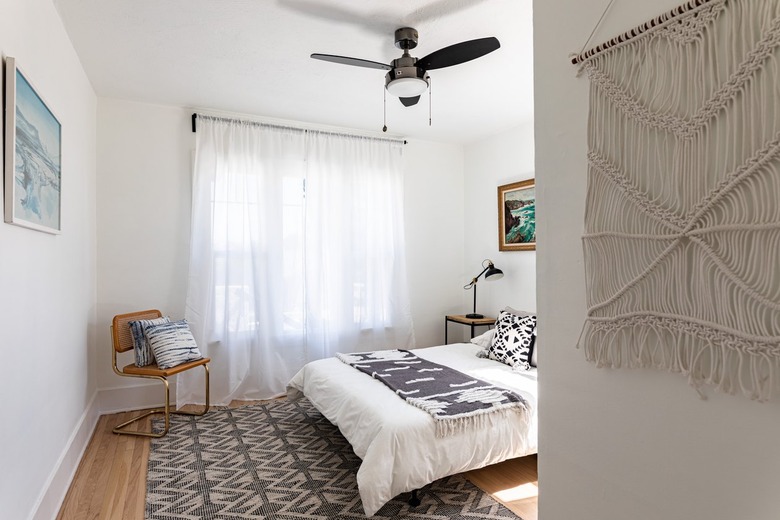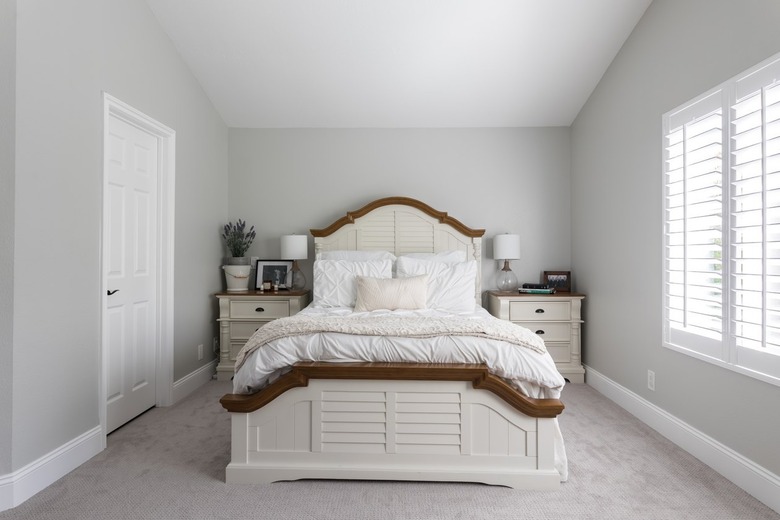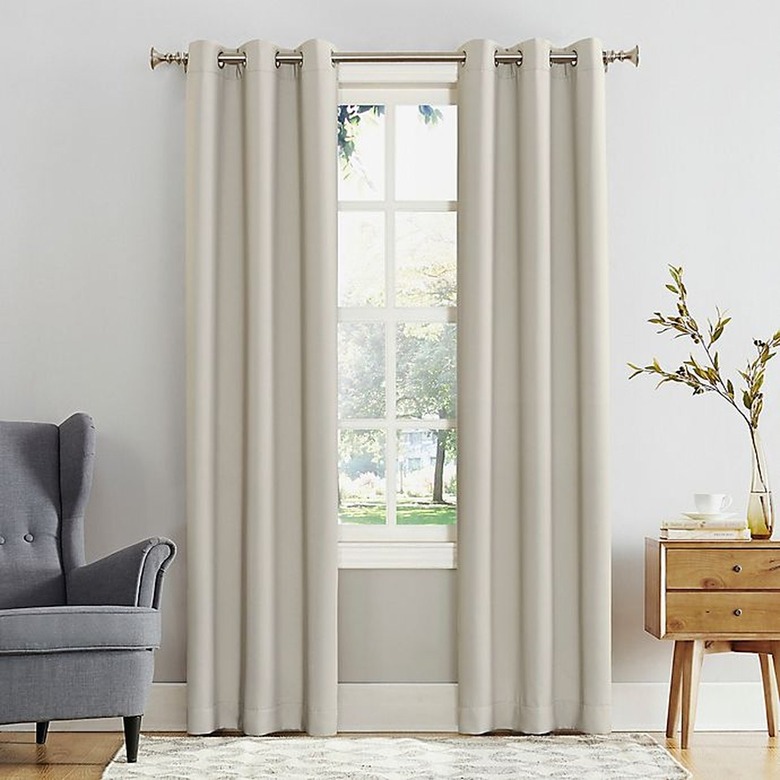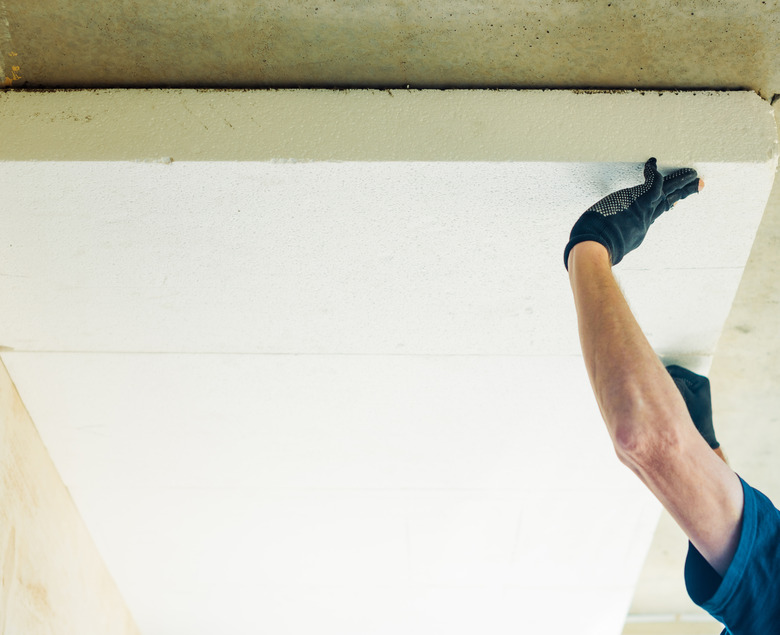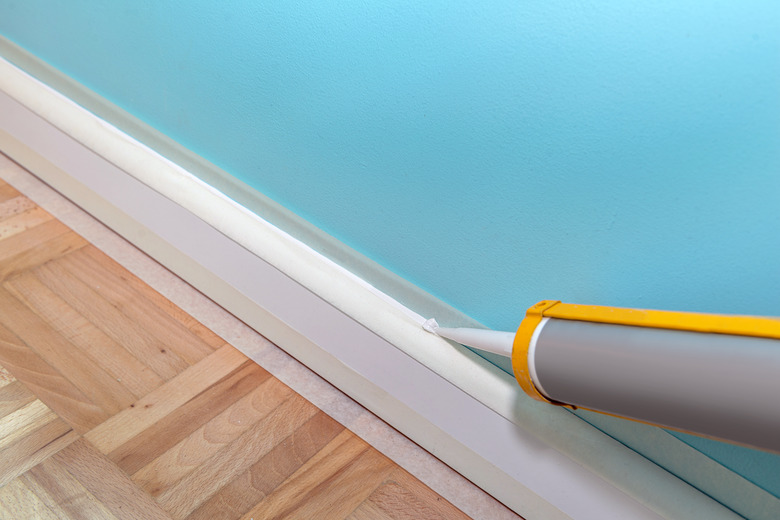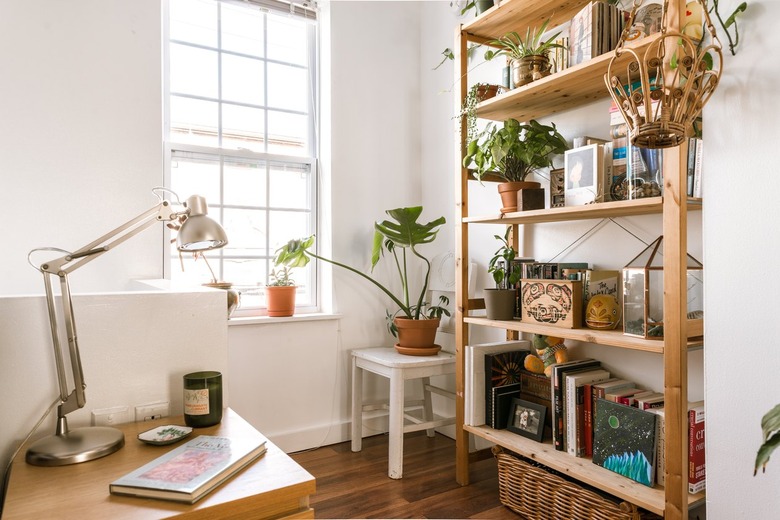How To Soundproof A Bedroom In 6 Easy Steps
We may receive a commission on purchases made from links.
The steps to soundproof a room involve one of two approaches: keeping sound in a room or keeping sound out of a room. For a home theater space or a music room, the objective is to keep the sound in so it doesn't travel to other areas of the house. Soundproofing a bedroom, however, means eliminating unwanted noises from other rooms and the outdoors to make it as quiet and peaceful as possible.
Whether you work a night shift and are trying to drown out the noisy day or you're simply a light sleeper, there are easy solutions for addressing noise both inside and outside of your bedroom.
A Brief Introduction to Soundproofing
A Brief Introduction to Soundproofing
There are two basic concepts for understanding noise and soundproofing. First, sound travels by sending vibrations through the air. It can also send vibrations through materials (like wood and drywall), which in turn vibrate the air on its way to your ears. Therefore, the primary goal of soundproofing is to block or absorb sound vibration.
The second concept involves the two types of noise: impact and airborne. Impact noise comes from things bouncing off the walls or ceiling, like footsteps overhead or noisy neighbors. Airborne noise comes from honking car horns, bar hoppers outside, or a TV in the next room.
If sound waves are coming from other rooms in your own house, you can employ soundproofing measures inside and/or outside the bedroom. If sounds are coming from outdoors or from neighboring units, you're limited to soundproofing strategies for inside the bedroom.
6 Steps to Soundproofing the Bedroom
6 Steps to Soundproofing the Bedroom
Some of the best soundproofing methods involve construction retrofits — because to really soundproof walls and ceilings, you usually have to remove drywall and add materials underneath, or you have to add more drywall. If you're a renter or you just don't want the extra trouble and expense involved with modifying the floors and walls, you can still do plenty.
Ready to have the quietest bedroom on the block? Here are six simple steps to create a soundproof room.
Step 1. Cover the Floor With Carpeting
Installing wall-to-wall carpeting is the best way to muffle impact noise from shoes and sliding furniture, and thick pile carpet — the thicker the better — is very effective for absorbing noise from below. If wall-to-wall carpeting isn't an option, throw area rugs on the parts of the floor you use the most, such as beside the bed and the path from the bed to the bathroom and the entry door.
If you already have carpeting that isn't very thick, it may muffle impact sounds you make to some degree, and it probably won't be very effective for absorbing sound from below. Consider installing soundproofing underlayment to improve sound absorption. If you're in the process of adding a new hardwood or laminate floor, install a layer of soundproofing underlayment beneath it and then use rugs as needed for extra sound absorption.
Step 2. Seal and/or Replace the Door
Install foam weatherstripping around the entire door frame to seal gaps through which sound can travel. And don't forget the bottom of the door, where there is usually a wide gap. The best way to seal it is to install a wraparound door sweep that touches the floor. These improvements will make a difference, but the most effective soundproofing option is to replace the flimsy hollow-core door that you find in most bedrooms with a solid-core one to add mass and reduce sound transmission.
Step 3. Block Sound Transmission Through the Windows
If your bedroom has older, single-pane windows, the best soundproofing option is to replace them with acoustical windows, but that's a fairly major project you may not want to undertake. The simplest DIY option is to hang soundproofing curtains, sometimes known as blackout curtains. These are made from heavy, sound-absorbent material, and they also add thermal insulation, but they only work if you keep them closed.
If you need more light, consider making your own window inserts by constructing a wooden frame that fits the window and filling it with two sheets of Plexiglas separated by a bead of acoustic sealant spread around the edges. Even an insert made with a single sheet of Plexiglas will help because the layer of air between the insert and the window will deaden sound from outside.
Step 4. Soundproof the Ceiling
Most of the really effective ways to soundproof a ceiling, such as adding more insulation, resilient channel, or an extra layer of drywall, call for some renovation work and are best implemented when building a new home or doing a remodel. As a simple DIY option, try tacking some acoustic foam or mass loaded vinyl (MLV) panels to the ceiling drywall. MLV is a thin but very dense vinyl material that comes in rolls, and it dampens sound due to the mass it adds, whereas acoustic foam has a dimpled surface that effectively absorbs noises you make in the room. This is the material that typically lines the wall of a recording studio, where it's imperative to have the sound deadened.
Another option is to hang fabric loosely from the ceiling. This doesn't fit everyone's design preferences, but it's a simple, low-cost way to absorb noise and prevent it from ricocheting off other hard surfaces in the room.
Step 5. Dampen Noise From Bedroom Walls
Again, most of the most effective ways for soundproofing bedroom walls, such as installing extra drywall, involve renovations, but the same DIY options of tacking acoustic panels to the drywall are also available. In addition, you can hang soundproof wallpaper, which is made of heavy vinyl that effectively blocks outside noise from coming in as well as noise from the bedroom from going out. It's also important to seal all cracks and gaps in the walls as well as gaps in the baseboards and around windows and doors with an acoustic sealant or caulk.
Step 6. Diminish Sound With Bedroom Furnishings
Although rearranging your furniture won't do much to stop noise from coming into the bedroom from outside, it can help attenuate the noise you make in the bedroom and make the space quieter. Soft furniture, like upholstered chairs and sofas, are great sound absorbers, and furniture with multiple shelves, such as bookcases, also work by suppressing echoing sound. Hanging tapestries and wall hangings is another easy strategy for making the bedroom quieter.
Wooden, plastic, metal, or glass pieces with flat, hard surfaces reflect sound and create reverberations, and they can actually amplify sounds in the room. Most bedrooms have tables, mirrors, and a wardrobe, and if they are arranged at angles relative to each other and not directly facing each other, sound amplification can be greatly reduced. Put lamps with lampshades on the bedside table and on the dresser or dressing table; the lampshades will interrupt sound waves bouncing off the walls and ceiling.
Additional Places to Seal Air Leaks
Additional Places to Seal Air Leaks
When soundproofing an existing wall or ceiling between rooms, the first thing to look for is air channels. In addition to doors and windows, you'll likely see air channels in areas like electrical outlets and switch boxes, gaps behind baseboards, and HVAC vents. Air is the best vehicle for sound, and any gaps or openings that let air through will also usher sound directly into the room.
You can seal air leaks at electrical boxes with special soundproofing outlet/switch covers, soundproofing putty, fiberglass insulation, or acoustical foam gaskets. Air vents, however, are a bit more complicated. Since they're essential to heating/cooling your bedroom or circulating fresh air, you can't cover up vents permanently, but if you really need some peace and quiet for a while, you can close a vent and cover it temporarily with a magnetic vent cover (to seal out air) as well as a piece of acoustical foam or a soundproofing material, like MLV.
Renovate to Really Soundproof the Walls and Ceiling
Renovate to Really Soundproof the Walls and Ceiling
If you're interested in a professional-level soundproofing, you'll likely need to renovate your bedroom's ceiling and walls. Possible solutions range from rebuilding the wall to applying soundproofing materials on the bedroom-side surfaces. Here are just a few ideas:
- Add sound-absorbing insulation, such as rock wool batts, between
framing members if the wall or ceiling framing will be exposed, such as during remodeling activities. - Add an MLV sound barrier and a layer of soundproofing
drywall over the existing wall or ceiling surface. - Use noise-dampening compound (such as Green Glue) when
installing new drywall over old. This is a special caulklike material that reduces
vibration transfer between the drywall layers. - Install resilient channels over the existing surface and then
add a layer of soundproofing drywall. Resilient channels are metal strips that move
slightly to help the drywall absorb vibrations.
References
- Tomorrow Magazine: How To Soundproof A Bedroom – Simple, Step By Step Guide
- Soundproof Cow: How to Soundproof a Room
- Better Soundproofing: How to Soundproof a Ceiling: Best, Cheap and Effective DIY Solutions
- Soundproofing 101: Basic Soundproofing Principles
- Soundproof Central: DIY Soundproofing A Room Cheaply – An Easy How To Guide
